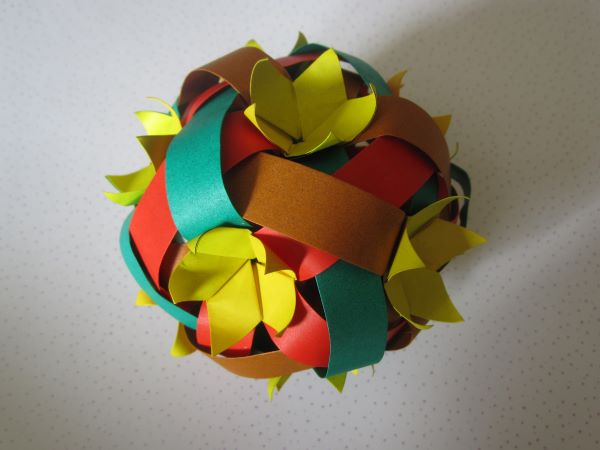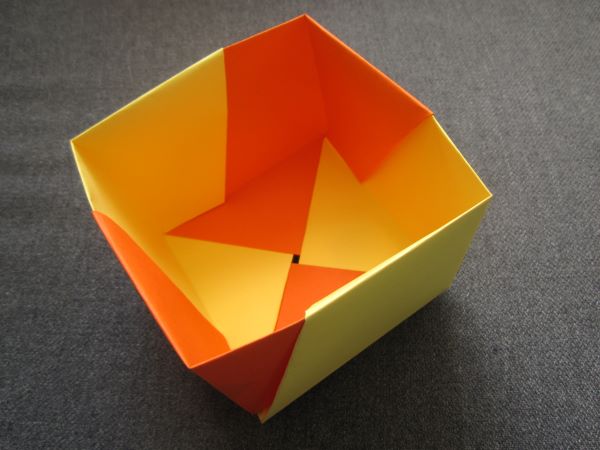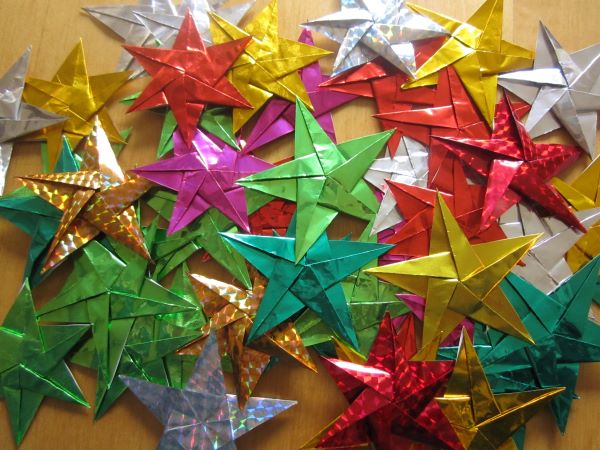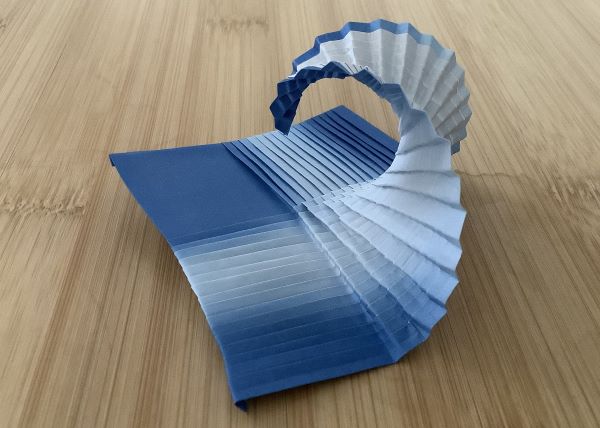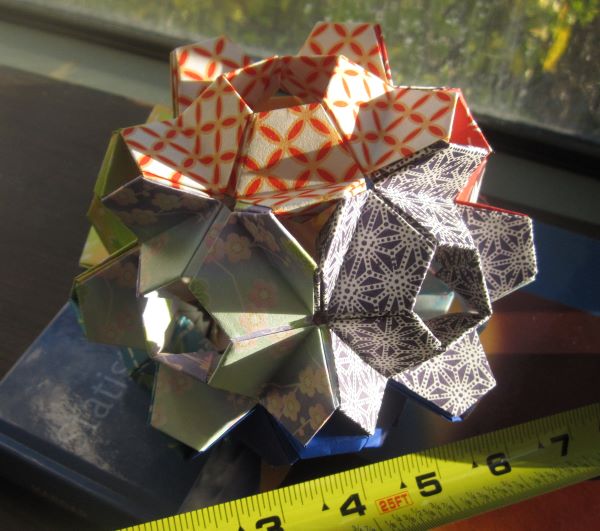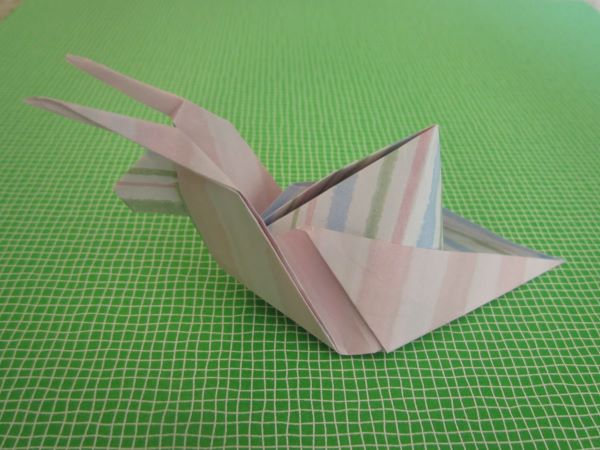
Snail by Mark Bolitho
Last month I attended the East Bay Origami Convention, which is a small event near me. Origami conventions are generally organized into sessions with an instructor teaching models. This snail was part of a session that folded a few simple models by Mark Bolitho. (The instructor was not Bolitho, it was someone else.) Basically anyone can sign up to teach anything, so sessions can be a bit of a mixed bag, but this one was very nice.
Origami spaces are rather interesting. They’re extremely age-diverse from preteens to retired folks, and you can’t judge a person’s skill level from their age. There are a variety of interests, with figurative origami (i.e. origami that represents various forms like animals) generally being most popular, but there are also people like me who are more interested in abstract stuff like modulars and tessellations. Sadly modulars and tessellations tend to be less suited to convention sessions, because you can’t really fold them in one hour.
There are also dual tendencies towards complexity and simplicity, with people wanting to impress with their skill, but also appreciating elegance and accessibility. I’m situated somewhere in the middle of that. I’m a very non-competitive person, so the show-offiness of origami spaces can be a bit off-putting sometimes. But I’m also quite interested in technique and in mathematics, so there’s some complexity that comes with that.

